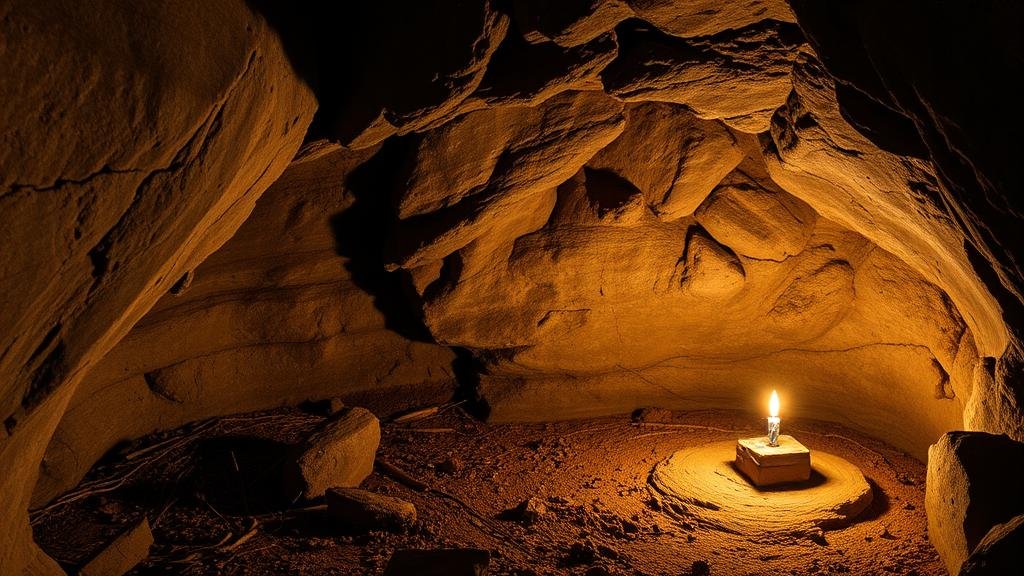Interpreting Cave Symbols as Hints for Underground Treasure
Interpreting Cave Symbols as Hints for Underground Treasure
The quest for underground treasure has captivated the imagination for centuries, with countless tales of hidden riches waiting to be discovered. Often, those who once roamed the earth left behind clues in the form of cave symbols etched into stone walls. This article delves into the significance of these symbols, how they serve as hints for treasure, and the methods used to interpret them effectively.
The Historical Context of Cave Symbols
Cave symbols date back thousands of years, encompassing various cultural interpretations and meanings. Archaeologists and researchers have identified these symbols in various locations across the globe, from the intricate pictographs in the Lascaux Caves in France to the mysterious petroglyphs found in the American Southwest.
These symbols often serve as markers for various purposes, including religious ceremonies, territorial claims, and yes, even treasure maps. The use of such markings can be traced back to ancient civilizations, including the Indigenous peoples of the Americas who used symbols to delineate sacred spaces, and Norse explorers who left runes as signs of their journey.
Common Types of Cave Symbols
Various symbols may appear in caves, each potentially representing different meanings related to treasure hunting. Understanding the types of symbols and their potential implications is fundamental in the quest for hidden riches. Here are some common types:
- Animal Symbols: Representations of animals often signify either direction or danger. For example, the presence of a bear might indicate a nearby treasure, while a snake could warn of impending threats.
- Directional Arrows: Arrows pointing in specific directions can serve as navigation aids, guiding treasure seekers toward encoded locations.
- Shapes and Geometric Patterns: Circle and triangle symbols may denote spiritual significance, while squares could represent boundaries or safe zones where treasure can be found.
Interpreting Symbols: Methodologies and Tools
Interpreting cave symbols is not merely an exercise in creative imagination; it involves a systematic approach that combines historical knowledge, archaeological context, and analytical skills. Several methodologies are employed by treasure hunters and researchers alike. e include:
- Field Studies: By visiting sites where cave symbols are located, researchers can collect primary data and observe the environmental context surrounding the symbols.
- Comparative Analysis: Examining symbols from various sites can reveal common themes and meanings, enhancing the understanding of their significance.
- Technological Tools: Tools such as 3D imaging and digital mapping software enable researchers to visualize symbols and their potential connections in a three-dimensional space.
Case Study: The Hobo Code
One fascinating example of symbolic interpretation is the Hobo Code, used by itinerant workers during the Great Depression in the United States. They developed a set of symbols to communicate essential information, including areas that were friendly or hostile, locations with food, and even spots with potential for treasure. For example, a particular symbol resembling a circle with a line inside indicated a location where a person could find a friendly family willing to offer assistance.
This set of symbols, while not derived from cave art, demonstrates how contextual interpretation can lead to valuable insights. Similarly, cave symbols can often serve practical purposes beyond their immediate visual impact.
Real-World Applications: Exploring Cave Symbols Today
Cave symbols continue to inspire treasure hunters and archaeologists. By employing a thorough understanding of these symbols, treasure seekers may potentially stumble upon hidden artifacts or valuable historical items. For example, the discovery of the famous Lost Dutchman Gold Mine in Arizona can be attributed to earlier interpretations of local symbols, leading to the hypothesis of treasure lying within the Superstition Mountains.
Challenges in Interpretation
While interpreting cave symbols opens paths to potential treasures, there are several challenges involved in this endeavor:
- Loss of Context: Over time, symbols may become weathered or obscured, leading to misinterpretation.
- Cultural Misunderstanding: Modern interpretations might clash with historical context, leading to erroneous conclusions about the symbols’ meanings.
- Legality and Ethics: Many cave sites are protected, and disturbing them can lead to legal repercussions. Treasure seekers must always consider the ethical implications of their quests.
Conclusion: Actionable Takeaways
Interpreting cave symbols as hints for underground treasure requires diligence, creativity, and a respect for historical context. Here are some actionable takeaways for those interested in exploring this topic further:
- Study local history and cultures to better understand the symbols you encounter.
- Use technology to analyze cave symbols and map potential treasure locations.
- Always prioritize ethical considerations and legal boundaries when exploring cave sites.
By applying these techniques, treasure enthusiasts and researchers can enhance their understanding of cave symbols and the rich history they represent. Who knows what hidden treasures these ancient markings might lead to next?



